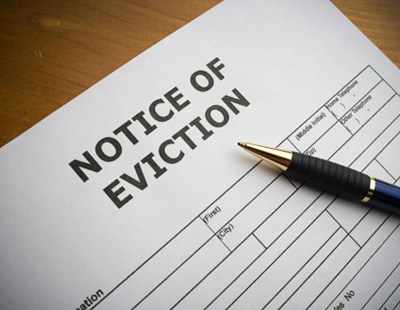Good inventory management protects both the landlord and the tenant and establishes what the tenant obligations are at both the start and end of the tenancy.
The deposit schemes will advise tenants to attend both the inventory and check-out appointment, but this is not always practical with these reports taking 1-2 hours and more on larger properties.
Tenants generally do not want to trail behind an inventory specialist, for this length of time. It is much easier, once the tenant has the report, to follow the structure which is clearly laid out and check the report is an accurate reflection of the property and its contents.
Detailed inventory and schedule of condition reports can run into 40+ pages, and whether conducting them in house or using an inventory specialist, neither are infallible – the tenant has a key role to play with the inventory, and will usually be allowed seven days to settle into the property and check through the inventory in detail.
Tip 1 – Educating tenants – a stitch in time...
The inventory and schedule of condition is a visual check of the property and not a maintenance report. If the scope of the inventory report is not understood, it can lead to delays in obtaining signatures – if, for example, the shower, boiler or hot water does not work properly, which is a maintenance issue.
Tenants must be aware it is their responsibility to check the inventory carefully, note any omissions and take pictures. Talking them through the process and explaining how the inventory protects them, is more effective than simply relying on T&Cs.
We have on occasion experienced irate tenants who have found a minor omission and believe it is a conspiracy to keep their deposit – so not a positive start for the agent or landlord.
Tip 2 – Check in the tenant – physical or digital
An accompanied check-in reaffirms the point above, and assists the tenant to understand the potential impact an inventory may have on the deposit.
Highlighting any issues within the property also makes them feel part of the process - and for these reasons, a check-in is highly recommended.
However, as minimising contact now takes precedence, use automation to capture areas of concern and obtain signatures within seven days.
Tip 3 – Terms and guidelines
Cleanliness is the main area of dispute, so take steps to head this one off at the start of the tenancy.
A good inventory will show the overall cleanliness of the property in addition to cleanliness room summaries using a glossary of terms contained at the start of the inventory document.
Cleanliness can be subjective, so it is advantageous to highlight where the glossary of terms is listed. Fair wear and tear does not apply to cleanliness, and so the property must be returned to the same standard, otherwise a deduction may apply.
Tip 4 – Not all cleaners are ‘professional’
Just because a professional cleaner has attended the property, it does not always mean the clean is to a ‘professional standard’ – if, for example, dust was present on skirting boards and shelves. In this situation, the term ‘good domestic standard’ may be used.
We are sometimes asked why it states this when a professional cleaner has conducted the clean. It is always advisable to get this right as it is generally the most contentious issue with tenants.
Tip 5 – Educate your landlords about fair wear and tear
It is vital to manage the landlords’ expectations. When a claim goes to adjudication and the breach is accepted, often the amount of the claim is reduced by the adjudicator, leading to a disappointed landlord.
This can occur for a few reasons, but the most common one is because fair wear and tear has not been factored into the claim. For example, if a carpet is three years old, the tenant is not responsible for those three years, so even if they have damaged the carpet, the claim has to factor quality, age, lifespan and condition.
A good check-out report will highlight if dilapidations are due to damage or fair wear and tear. See our landlord guide on fair wear and tear.
Tip 6 – Changes to the property – requesting permission
This is covered in most ASTs, but it is good practice to advise tenants to ask permission first.
Common deductions are attributed to damage or changes to walls from hanging pictures, adding additional hooks or shelves, painting walls and using blue tack.
It’s not unreasonable for tenants to make minor adjustments to their new home, but get them in the habit of asking first so you have the opportunity to remind them of their obligations.
Tip 7 – Outside maintenance - how does your garden grow...
Tenants often forget about the garden at check-out so they need to ensure it is left as they found it, otherwise they will face a gardening deduction.
Tip 8 - Videos are not the whole picture
Some agents use these as a quick alternative, but unless you are a professional cameraman, the video tends to go up and down and all around - not pleasant viewing for landlords or tenants!
Video evidence is acceptable by the deposit dispute schemes, but often does not capture quite enough detail, as its easier to miss items using this method– so if you go to dispute, you may end up disappointing your landlord.












%20-%20IMAGE%20Client%20Accounting%20%E2%80%93%20what%20are%20your%20options.jpg)








Join the conversation
Please login to comment